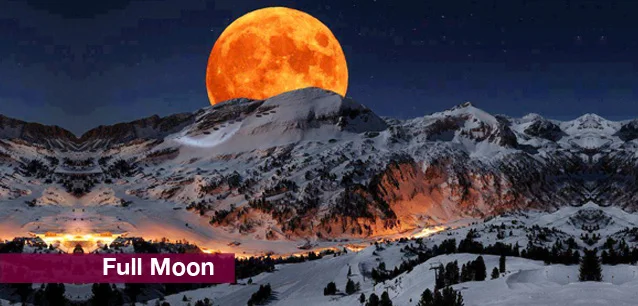 AD
AD
Country
- Africa
- Alcohol, Tobacco & Drugs
- Animals, Fish, Insects & Birds
- Anniversaries
- Australia
- Books
- Brazil & S.America
- Buddhism
Category
- Afghanistan, AF
- Aland Island, AX
- Albania, AL
- Algeria, DZ
- American, Samoa, AS
- Andarra, AD
- Angola, AO
- Anguilla, Al
Event Type
- Daily
- Weekly
- Annual
- Recurring
Duration
- All
- 1 Day
- 2 Day
- 3 Day
- 4 Day
- 5 Day
- 6 Day
Event Type
- Daily
- weekly
- Annual
- Recurring
Event Type
- Daily
- weekly
- Annual
- Recurring
Today is: October 05
Apple Betty Day
Black Pound Day (UK)
Chic Spy Day™ (1962)
Do Something Nice Day
Dupuytren Disease Awareness Day (1777)
Frugal Fun Day, Intl.
Fungus Day, Ntl. (UK)
Kimchi Fest (US-PA)
Republic Day, (PT)(1910)
Teacher Day, World (1966)
The Madonna del Lume Celebration, (US-CA)
Active Aging Week
Albuquerque Balloon Fiesta, Intl. (US-NM)
Amputee Awareness Week (AU)
Animal Welfare Week
Borderline Personality Disorder Week (AU)
Carry a Tune Week, Ntl (1746)
Dance Week, Ntl.
Disability History & Awareness Weeks (US/CA)
Elderly Filipino Week (PH)
Emergency Nurses Week
Fat Bear Week
Fire Prevention Week, Ntl. (1871)
Fish Supper, RNLI (UK)
Fish Supper, RNLI (UK)
Golden Week (CN)
Healthcare Foodservice Week, Ntl.
Healthcare Supply Chain Week, Ntl.
Manufacturing Week, Ntl.
Mental Illness Awareness Week
Metric Week, Ntl.
Mystery Series Week
Navratri (H)
Nobel Prize Announcements
Pchum Ben Festival (KH)
Physicians Assistant Week (1967)
Public Relations Week (Getting the World to Beat a Path to Your Door)
Semana Cervantina (ES)(1547)
Space Week, World (1957)
Vegetarian Week, Ntl. (UK)
Walk Your Dog Week, Ntl.
ADHD Awareness Month
Adhik Ashvina (H)
Adopt-a-Dog Month, (AHA)
Adopt-a-Shelter Dog Month
Advertising, Co-op Advertising Awareness Month
Animal Safety & Protection Month, Ntl.
Antidepressant Death Awareness Month
Anxiety and Depression Awareness Month (AU)
Apple Month, Ntl.
Applejack Month
AquaTober
Architecture Month, Archtober
Arts & Humanities Month, Ntl.
Asu (S)
Autism Awareness Month (CA)
Bake & Decorate Month, Ntl.
Bat Appreciation Month
Battery Safety Month (Auto)
Bi-national Health Week (US/CA/MX-varies locally)
Big Draw, The
Big Draw, The
Bilingual Child Month, Celebrating the
Black History Month (UK)
Black Speculative Fiction Month
Blind Month, National Meet the
Blindness Awareness Month
Book Month, Ntl.
Breast Cancer Awareness Month, Ntl.
Bullying Month, Stop, Ntl.
Bullying Prevention Month, Ntl.
Caffeine Addiction Recovery Month
Car Care Month, Ntl. Fall
Caramel Month, Ntl.
Celiac Awareness Month (US)
Cheese Month, American
Chili Month, Ntl.
Chiropractic Health Month, Ntl.
Church Library Month
Church Safety and Security Month, Ntl.
City, Urban October
Class Reunion Month
Clergy Appreciation Month
Co-op Awareness Month
Collegiate Alcohol Awareness Month, Ntl.
Company Culture Month, Global
Company Culture Month, Global
Computer Learning Month
Contact Lens Safety Month
Cookie Month
Corn Month
Country Ham Month
Country Music Month
Crime Prevention Month, Ntl.
Cybersecurity Month, Ntl.
Danger Run (US-KY, IN, IL)
Dental Hygiene Month, Ntl.
Depression Education & Awareness Month
Dessert Month, Ntl.
Disability Employment Awareness Month
Diversity Awareness Month, Global
Domestic Violence Awareness Month
Down Syndrome Month, Ntl.
Dyslexia Awareness Month
Eat Better—Eat Together Month
Eczema Awareness Month
Emotional Intelligence Awareness Month
Energy Action Month, Ntl.
Eye Injury Prevention Month
Festival of Penha (BR-RJ)
Filipino American History Month (1587)
Financial Planning Month
Freethought, Month of, Ntl.
Gain the Inside Advantage Month, Ntl.
Gay & Lesbian History Month (1979)
German-American Heritage Month (1683)
Girls Night In (AU)
Go Sober Month (UK)
Golf Month, Australia
Great Cycle Challenge (AU)
Halloween Safety Month
Head Start Awareness Month
Health Literacy Month
Healthy Lung Month
Healthy Workplace Month (CA)
Hearing, Audiology Awareness Month, Ntl.
Hemophilia, Bleeding Disorders Month, Ntl. (AU)
Hispanic Heritage Month
Home Eye Safety Month
Indoor Air Quality (IAQ) Month, Ntl.
Islamic History Month (CA)
Italian-American Heritage Month (1492)
Kitchen & Bath Month, Ntl.
Learning Disabilities Month, Ntl. (CA/US)
Liver Awareness Month, Ntl.
Lupus Awareness Month (UK)
Medical Librarians Month, Ntl.
Medicine Abuse Awareness, Ntl.
Menopause Month, World
Muslim American Heritage Month (US)
Organize Your Medical Information Month
Orthodontic Health Month, Ntl.
Pedestrian Safety Month
Pescatarian Month, Ntl.
Pet Wellness Awareness Month, Ntl.
Pharmacist Month, American
Photographer Appreciation Month
Physical Therapy Month, Ntl.
Pickled Peppers Month
Pink Ribbon Breakfast (AU)
Pit Bull Awareness Month, Ntl.
Pituitary Awareness Month (UK)
Pizza Month, Ntl. (1984)
Polio Awareness Month, (CA/AU)
Polish-American Heritage Month
Popcorn Poppin' Month, Ntl.
Positive Attitude Month
Principal's Month, Ntl.
Rabi al-Thani (M)
Reading Group Month, Ntl. (1917)
Rett Syndrome Awareness Month
Roller Skating Month, Ntl.
STEM Mentoring Month
Sarcastic Awareness Month
Sausage Month, Ntl
Seafood Month
Seed Gathering Seasons (UK)
Senior's Month (AU-QLD)
Sensory Awareness Month, Ntl.
Shoctober - Defibrillator National Awareness Month (AU)
Spina Bifida Awareness Month, Ntl.
Spinach Lovers Month
Spinal Health Month, Ntl.
Squirrel Awareness and Appreciation Month
Stamp Collecting Month, Ntl
Stop America's Violence Everywhere (SAVE) Month
Substance Abuse Preservation Month, Ntl.
Sudden Infant Death Syndrome (SIDS) Awareness Month
Sunday School Teacher Appreciation Month
Teentober
Tishrei (J)
Turner Prize Exhibition (UK)
U.S.-Mexico Border Health Month
Vegetarian Month
Window Covering Safety Month, Ntl.
Winter Weather Preparedness Weeks (Varies by Location)
Women's History Month (CA)
Women's Small Business Month
Work & Family Month, Ntl.
Workplace Politics Awareness Month
Youth Justice Action Month, Ntl.
LEEP Calendar
Scroll to explore events active on this date.
Additional Events on LEEP
LEEP INK FEATURES

August is Appropos
A toddler playing in the fountain at a park in Santa Fe, New Mexico—Photo LD Lewis. In August, we live through the Dog Days of Summer. It's hot and often humid, and those ...

September is Sassy
Can you hear that sigh of relief from parents worldwide? Yes! September marks the return of students to school, a global phenomenon. Preparations for the ACT and SATs begin earnestly for ...

OOH LA LA, October
October is the busiest month for events, with 5% more happening than in May, the second most eventful month. Sailing enthusiasts will be glued to the finals of this year's Am...
About the August Full Moon
Moon
Ends: Aug 01, 2023
DESCRIPTION:
A full moon occurs when the moon is illuminated by the sun and on the opposite side of the earth. Its ecliptic longitude is 180 degrees.
For centuries, people have applied names to full moons to track the seasons and as a point of reference. The names listed below come from Native American and Colonial American traditions passed down through generations. Here are the common names for full moons in each month in the Northern Hemisphere (the Southern Hemisphere doesn't do this tradition):
January: Wolf Moon—Named after the howling of wolves during the cold winter nights.
February: Snow Moon—Named for the typically heavy snowfall.
March: Worm Moon—As the ground thaws, earthworms emerge, attracting birds.
April: Seed Moon—Time to plant for the fall harvest.
May: Flower Moon—Named for the abundance of flowers in May.
June: Strawberry Moon— due to the short harvesting season for strawberries in the northeastern United States.
July: Buck Moon—when new antlers grow on male deer (bucks).
August: Sturgeon Moon—when sturgeon fish are abundant in North America's Great Lakes.
September: Harvest Moon—time to harvest crops.
October: Hunter's Moon—game is at its fattest, allowing hunters to stock up for the winter months.
November: Beaver Moon—when beavers build their winter dams.
December: Cold Moon—long, dark, and cold nights.
Full moon names vary between cultures, regions, and traditions; several full moons have alternative names. The above are the most common.
A blue moon occurs when two full moons are in a single month, and February is the only month in the year that occasionally does not have a full moon. A blood moon describes a total lunar eclipse.
VIDEOS
Currently, this event does not have supporting videos.
SUPPORTING DOCUMENTS
Currently, this event does not have supporting documents.
ADDITIONAL IMAGES
Currently, this event does not have supporting images.
Where would you like to go now?
 AD
AD
By using this site. You are agreeing to use of cookies. Learn more in our Privacy Policy
/footer-logo.svg)
LEGAL: Excerpts and links may be used, provided that full and clear attribution is given to Jubilee LLC and LEEPCalendar.com, with appropriate and specific direction to the original content (Page URL). Additional documents, embedded videos and additional image rights retained by their creators and are provided to increase understanding of the event or topic.
Jubilee LLC reserves the right to accept or reject inclusion of events in this calendar. The appearance of an event in LEEP Calendar does not imply endorsement of the event, nor the organization championing the event by Jubilee LLC, its stakeholders, customers or subsidiaries. All dates, contact information, URLs, addresses, and information relating to any event, promotion or holiday are subject to change without notice and should be treated as estimated. Jubilee LLC, our stakeholders, customers and subsidiaries cannot warrant accuracy. Users of this application are solely responsible for verifying actual event date with organizers and additional sources prior to committing resources, financial, human or otherwise.


